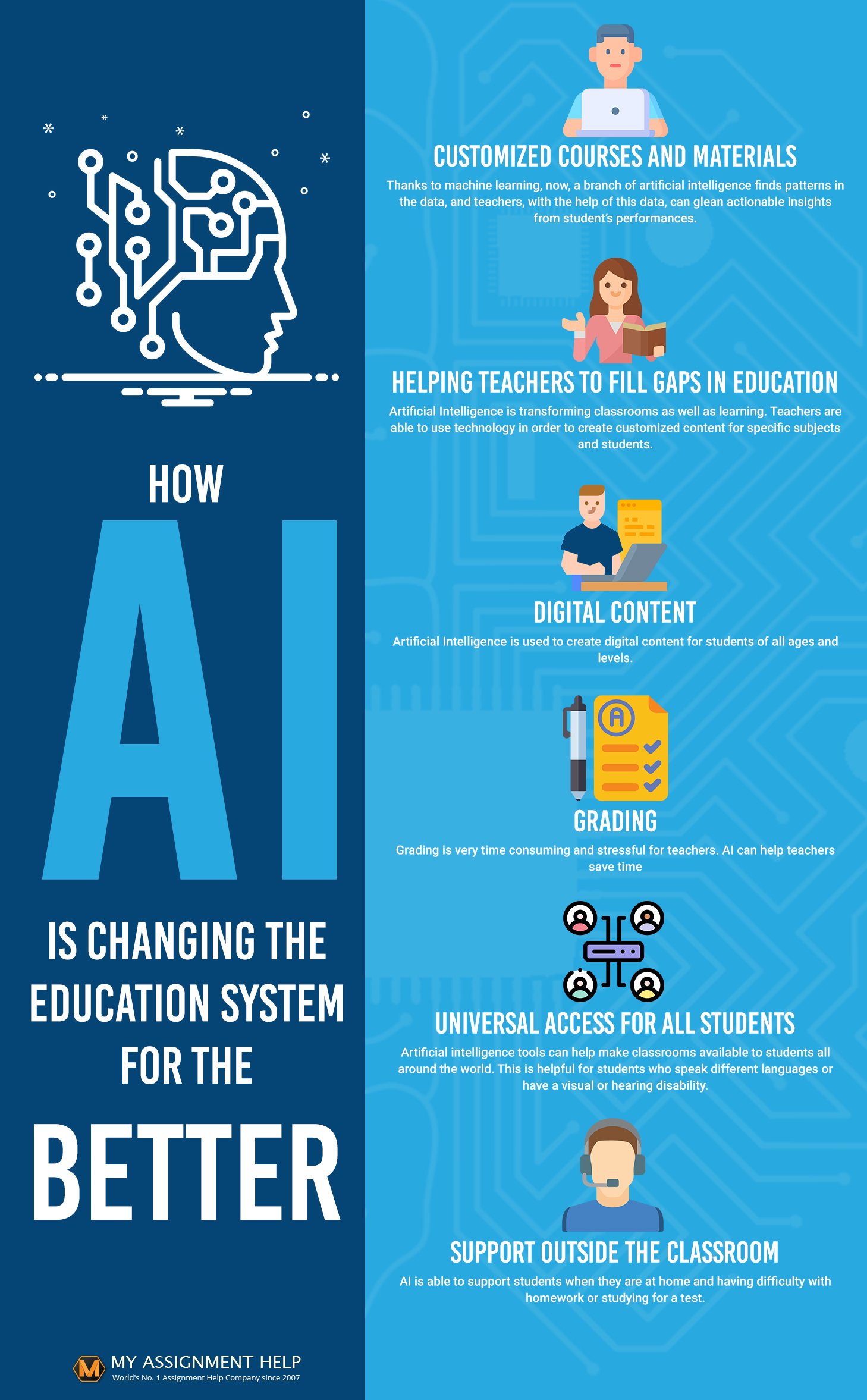Artificial Intelligence (AI) is like a smart robot that’s starting to change how we learn and teach in big ways. For both teachers and students, AI is making education more interesting and helpful. Let’s explore some of the ways AI is reshaping the educational landscape.
1. Personalized Learning
Imagine if a teacher could understand exactly what each student in a big class needs to learn better. AI is making this possible by creating personalized learning plans for every student. It can figure out what a student knows, what they need to learn next, and how they learn best. This means students can learn at their own pace, making education fit them like a glove.
2. Automated Grading
Grading papers and exams can take a lot of a teacher’s time. AI is stepping in to help by automatically grading multiple-choice and fill-in-the-blank questions. Some advanced AI systems can even grade essays. This gives teachers more time to spend on teaching and helping students one-on-one instead of being buried under a pile of papers.
3. Smart Tutoring Systems
AI tutors are computer programs that can help students learn subjects like math, science, and languages. These smart tutors can guide students through lessons, give them practice problems, and help them when they’re stuck. They’re like having a personal tutor that’s available anytime, making it easier for students to get help outside of school hours.
4. Enhancing Classroom Learning
AI is also making classroom lessons more fun and engaging. For example, AI-powered presentations can adjust the content based on how well the class is understanding the material. There are also educational games and simulations that help students learn by doing, which is a lot more interesting than just reading a textbook.
5. Improving Accessibility
AI is a big help for students who need extra support. For students with disabilities, AI tools can read text out loud, translate languages in real-time, and even predict what a student wants to type next. This makes learning more accessible for everyone, no matter their challenges.
6. Predicting Student Success
AI can look at how students are doing in their classes and predict who might need extra help before they fall behind. This means teachers can step in early to offer support, rather than waiting until a student fails a test. It’s like having a crystal ball that helps keep students on the path to success.
7. Enhancing Teacher Training
AI isn’t just for students; it’s also helping teachers get better at teaching. There are AI programs that can watch a teacher’s lesson and give tips on how to improve. Teachers can also use AI to practice their skills in virtual classrooms, making them more prepared for the real thing.
8. Facilitating Global Learning
With AI, students can connect with learning communities and resources from around the world. AI language translation tools break down language barriers, making it possible for students to learn from materials and teachers in other countries. This opens up a whole new world of learning opportunities.
Conclusion
AI is like a new friend for both teachers and students, making learning more personalized, efficient, and accessible. It’s not about replacing teachers but helping them and their students achieve more. As AI technology gets better, it’s exciting to think about all the new ways it will continue to change education for the better. From smart tutoring systems to global classrooms, AI is reshaping the educational landscape in ways we’re just beginning to explore.
